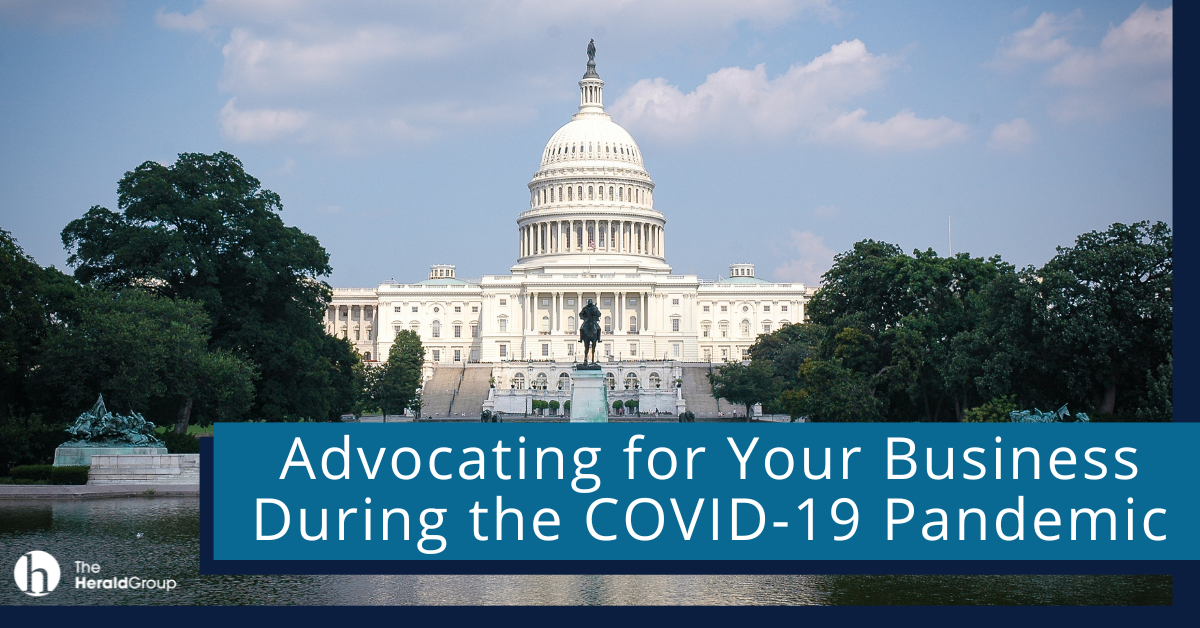Advocating for Your Business During the COVID-19 Pandemic
By Maggie Sherouse, Vice President
The coronavirus relief packages, the latest signed by President Trump on March 27th, totaled $2 trillion and aimed to give immediate financial assistance to struggling individuals and companies. Businesses large and small worked to quickly make their needs known to Congress, and the resulting bill includes grants to pay employees, as well as loans for businesses who are struggling.
During the crafting of the bill, trade associations and companies scrambled to communicate what they need to continue to operate and help the economy continue to function. The Herald Group worked to make sure our clients clearly conveyed their policy priorities and built a compelling case for why aid was needed. During this time, we identified several key elements that helped our clients achieve success.
Demonstrated Need of Financial Assistance
Companies that were successful in receiving aid in the relief package showed precisely how both their companies and employees were suffering in humanized ways policymakers could easily understand. This included releasing details on declining sales, voluntary closures they initiated, and how government restrictions like social distancing were causing losses. These resources were shared on owned content channels, incorporated into media outreach, and shared directly with elected officials.Compelling Narrative for How Relief Will Help Everyone
Some policymakers were skeptical about how helping big businesses would help everyday Americans. This required companies and trade associations to show how their services helped other sectors, employed thousands of people, and provided an essential good or service to the public. Previous research on the state-level economic impacts of these industries were particularly helpful, as well as employment numbers.Strong Bench of Credible Advocates
While it seemed everyone on Twitter had an opinion about the relief package, some opinions carried more weight than others. Activating employees, policy experts, and advocacy organizations helped to demonstrate the breadth of support behind helping businesses make it through this challenging time. These voices made their opinions known through social media, op-eds, and direct contact with elected officials.Strange Bedfellows
A consensus formed among diverse ideologies that there was no way businesses could plan for something like a pandemic and widespread, mandated closures. This relief package brought together unusual allies like companies and labor unions, and Democrats and Republicans, to work together to get the job done. Companies that were successful highlighted how diverse groups of people agreed on their issue, showing key decision-makers and elected officials that there was substantial support for action.

